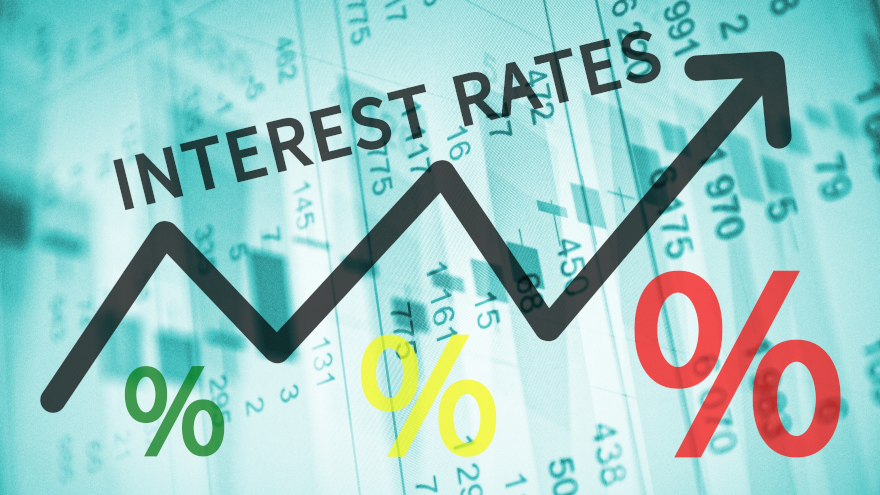2 hopeful thoughts for automotive even as interest rates rise another 25 basis points

By subscribing, you agree to receive communications from Auto Remarketing and our partners in accordance with our Privacy Policy. We may share your information with select partners and sponsors who may contact you about their products and services. You may unsubscribe at any time.
The Federal Reserve raised interest rates another 25 basis points this week to leave the federal funds rate at 5.25-5.5%.
But two leading automotive economists as well as another top industry analyst remain hopeful on two important fronts for dealerships and finance companies. They see vehicle affordability improving along with the economy avoiding a harsh recession.
Policymakers now have lifted rates 10 times to get to the current level. Edmunds shared its latest data showing the resulting impact in the past year, including:
—Average interest rates for new-vehicle financing rising from 5.2% to 7.2% (June 2022 versus June 2023)
—Average interest rates for used-vehicle financing climbing from 8.3% to 11% (June 2022 versus June 2023)
“The U.S. banking system is sound and resilient. Tighter credit conditions for households and businesses are likely to weigh on economic activity, hiring, and inflation. The extent of these effects remains uncertain. The committee remains highly attentive to inflation risks,” Fed policymakers said in a statement after voting unanimously in favor of the latest rate increase.
Subscribe to Auto Remarketing to stay informed and stay ahead.
By subscribing, you agree to receive communications from Auto Remarketing and our partners in accordance with our Privacy Policy. We may share your information with select partners and sponsors who may contact you about their products and services. You may unsubscribe at any time.
Cox Automotive chief economist Jonathan Smoke compiled another blog post following the Fed’s announcement, detailing how he’s seeing company data indicating average used-vehicle financing rates at 13.5% so far in July, slightly lower than the peak he spotted earlier this year.
“Retail used prices have also declined about 3% from their peak in April. Used-vehicle prices should see even greater declines over the next three months following large wholesale declines in May, June, and July. Vehicles are depreciating assets. The unique conditions that led to unprecedented appreciation in vehicle values in 2020 and 2021 have been replaced by more normal conditions where demand and supply are more balanced,” Smoke said.
“This is a good news story for the auto market and the consumer more broadly. With consumer inflation now less than wage and household income growth, affordability is improving for vehicle demand in both the used and the new markets, and consumers are more likely to see real income gains,” he continued.
Edmunds executive director of insights Jessica Caldwell shared her perspectives about the financing of new vehicles ahead of the Fed’s official announcement that many experts expected.
“Regardless of what the Fed does, the good news for new car buyers is that automakers have gradually offered more subsidized loan programs as inventory has improved and stabilized. That should take some of the sting out of rising interest rates for qualified consumers with good credit, with the caveat being a shorter loan term than desired in many cases. All other shoppers will need to tread cautiously if they plan on financing a car purchase this year,” Caldwell said.
“Despite average interest rates hovering above a hefty 7% in the second quarter, new vehicle sales have been robust for the broader industry. This can mostly be attributed to pent-up consumer demand that has been building for a few years, as well as fleet operators finally getting new vehicles. Healthy sales should carry on for the remainder of the year barring any major disruptions to the supply chain or vehicle production,” she went on to say.
Meanwhile, ADESA chief economist Tom Kontos described the potential for a recession created by the Fed’s actions. Kontos explained his reasoning during an episode of the Auto Remarketing Podcast recorded earlier this month.
“As far as the Fed not creating a situation of raising rates in such a way that it causes damage to the economy and sparks a recession, I think so far we’ve dodged that bullet,” Kontos said. “And we have a good chance to dodge it the rest of this year. Though, anyone who’s tried to look out with their crystal ball wants to at least consider the possibility that we might have something late in 2023 or in 2024 if some of these efforts by the Fed have a delayed impact that starts to flow later in the year than we’ve seen so far. I’m staying pretty optimistic that we can dodge the bullet and have a soft landing that doesn’t force us into recessionary conditions.
“I’m going to stick to that story and continue to, like they say, ‘Expect the worst but hope for the best,’ ” he added.
In another analysis, Comerica Bank chief economist Bill Adams and senior economist Waran Bhahirethan offered a prediction about what the Fed could do when given the next opportunity to modify interest rates this fall.
“The FOMC will probably take their time to decide whether further interest rate hikes are needed. In the press conference following the July decision, chair (Jerome) Powell said that a rate hike is possible at the next meeting in September — but recall that in June, chair Powell persuaded the more hawkish members of the FOMC to refrain from a hike by saying it is appropriate to raise rates more slowly as they approach what is likely the peak for this cycle. The same logic will likely be even more persuasive in September as core inflation and wage growth slow, more slack becomes visible in labor market data, and interest rates are higher than in June,” Adams and Bhahirethan said.
“That tees up the following decision on Nov. 1 for when Fed policymakers would seriously consider another hike,” they added.


